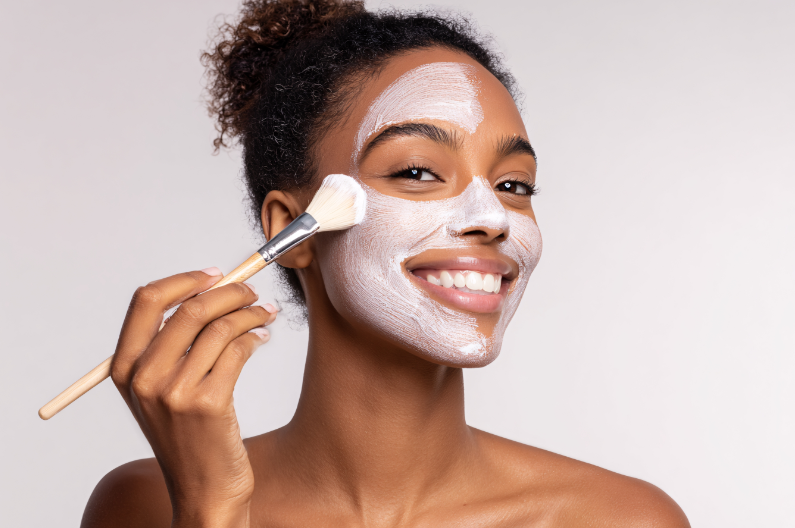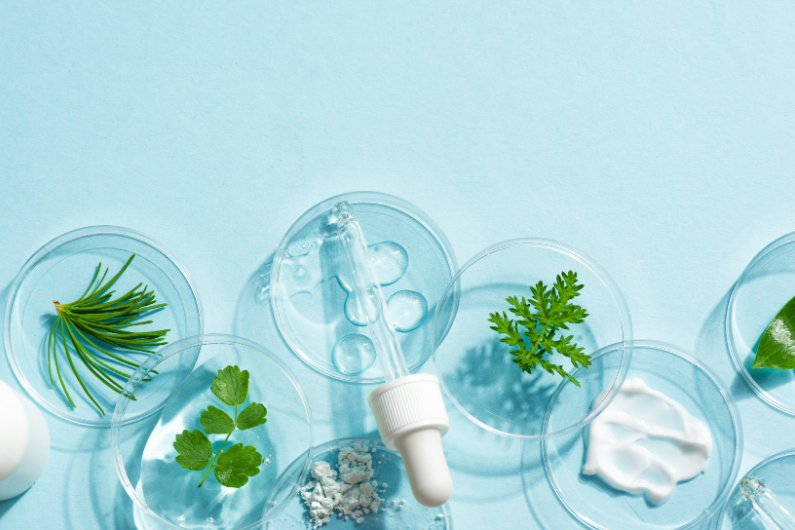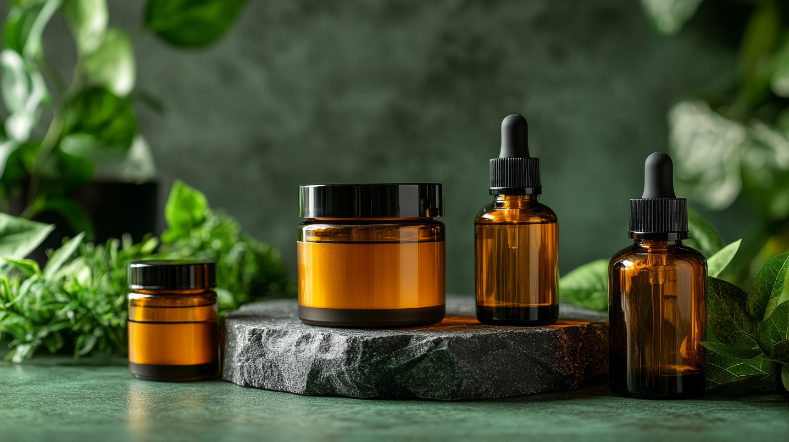
Date: 06 Oct 2025
If you’ve ever scanned skincare labels or scrolled through beauty reels, you’ve likely come across niacinamide (aka vitamin B3). But beyond the hype, what does it actually do for your skin—and is it really worth adding to your routine?
What Is Niacinamide?
Niacinamide, also known as nicotinamide, is a water‑soluble form of vitamin B3. It plays many roles in skin biology: it helps with the skin’s barrier function, supports healthy cell turnover, and has anti‑inflammatory effects.
Unlike high‑acid actives, niacinamide is relatively gentle and well‑tolerated across many skin types. But, like any ingredient, its efficacy depends on concentration, formulation, and layering.
Top Benefits for Your Skin

Here are the key benefits that make niacinamide a go‑to in many skincare routines:
1. Reduces Acne
One of the biggest draws is its ability to help manage acne and congestion. Niacinamide’s anti‑inflammatory properties calm redness and reduce irritation, which are common with breakouts. It can also help regulate sebum (oil) production, which in turn reduces pore clogging.
Further, it helps in:
- Inflammation control: Niacinamide dampens inflammatory signals, helping calm red, irritated, inflamed breakouts before they become worse.
- Sebum regulation: It helps balance oil production, so the skin is less likely to be overwhelmed by excess sebum that contributes to clogged pores.
- Pore appearance: Over time, clogged pores tend to look smaller as the skin becomes smoother and less congested.
- Synergy with other actives: Because it’s relatively gentle, many people layer niacinamide with acne actives like salicylic acid or benzoyl peroxide (just introduce slowly).
2. Fades Hyperpigmentation
Dark spots, acne scars, sun spots—niacinamide is effective at evening skin tone by inhibiting the transfer of melanin pigment within skin cells. Over time, this leads to a more uniform complexion. Paired with sun protection, its brightening benefits become more noticeable.
- Melanin transfer inhibition: Niacinamide blocks the transfer of pigment granules from melanocytes to skin cells, helping lighten existing dark spots.
- Evening effect: Over time, this leads to a more uniform skin tone, reduced discoloration, and fewer new dark marks (especially when combined with sun protection).
- Support for lightening actives: It works well alongside ingredients like azelaic acid, niacinamide + vitamin C (used at different times), kojic acid, and gentle exfoliants.
3. Improves Elasticity
While niacinamide is not a miracle “lifting” agent, evidence shows it helps improve skin firmness and elasticity by supporting healthy keratin and collagen function. By supporting the skin’s internal structure, it helps smooth fine lines and makes skin look more resilient.
- Collagen & protein support: Niacinamide supports the skin’s structural proteins, helping it retain firmness and smoothness.
- Reduced fine lines: By improving hydration and barrier function, skin looks plumper and softer, so fine lines become less obvious.
- Skin barrier resilience: A stronger barrier means the skin retains moisture better, resists irritants, and recovers faster from external stressors.
- Better tolerance to actives: When your barrier is healthier, it’s easier to incorporate more potent actives like retinoids or acids without excessive sensitivity.
How to Use Niacinamide Safely
To get the results without irritation, follow these guidelines:
1. Choose a sensible concentration—most effective niacinamide serums range between 2% and 10%. Higher concentrations may cause tingling or flushing in sensitive skin.
2. Introduce gradually—If your skin is new to it, start using it every other day or a few times per week, then build to once or twice daily.
3. Patch test first—Apply a small amount behind your ear or jawline for 24 hours to check for sensitivity or reaction.
4. Layer wisely.
- On clean, toned skin, apply niacinamide (a lightweight serum).
- Follow with heavier activities or moisturizers.
- Niacinamide is broadly compatible with other ingredients (like hyaluronic acid, peptides, retinol, and azelaic acid) in most cases.
- Some caution is given about combining it at the same time with pure Vitamin C (ascorbic acid) because of pH differences; you may prefer to use them in separate routines (e.g., one in the morning, one at night).
5. Use daily SPF—Niacinamide can enhance brightening benefits, but those won’t show if you skip sun protection. Always follow with a broad‑spectrum sunscreen in the daytime.
6. Know when to pause—If you notice persistent irritation, redness, stinging, or a burning sensation, pause use and let your skin recover. Some users report reactions over time, especially if the barrier is compromised. (There are anecdotal accounts of niacinamide eventually causing irritation in sensitive or sensitized skin.)
Best Niacinamide Products Clients Love (Available in Pharmily)

Here are some niacinamide products that are popular and available on Pharmily (Kenya):
- The Ordinary Niacinamide 10% + Zinc 1% (30 ml)—This is a cult-favorite skincare solution designed to target blemishes, oily skin, and uneven tone. With a high concentration of niacinamide (vitamin B3) and zinc, this serum helps reduce sebum production, fade dark spots, and tighten the appearance of pores—giving you a clearer, healthier-looking complexion.
- COSMO 10% Niacinamide + Zinc Serum 30 ml— This is a powerful daily treatment designed to help you achieve clear, smooth, and glowing skin. Formulated with a high concentration of niacinamide (vitamin B3) and zinc PCA, this serum works to control oil, reduce breakouts, fade dark spots, and strengthen your skin barrier.
- La Roche‑Posay Niacinamide B9 Serum 30 ml—This is a concentrated serum combining 10% pure niacinamide (Vitamin B3) with Vitamin B9 (folic acid), crafted to target pigmentation and uneven skin tone while bolstering the skin’s natural barrier.
- Garnier Ampoule Sheet Mask Niacinamide 2% + Kale 15g—This is a powerful skincare solution designed to revive dull skin and restore a healthy glow in just minutes. Infused with 2% niacinamide, this ampoule-rich sheet mask helps reduce blemishes, dark spots, and uneven tone, while kale extract nourishes and energizes tired skin.
Final Tips for Getting the Most Out of Niacinamide (Especially in Kenya)
- Always check the expiration date and seal integrity when buying online (including Pharmily).
- Store serums in a cool, dry place—avoid direct sunlight.
- When possible, purchase smaller sizes for active products so they stay fresh.
- Don’t skip sunscreen—niacinamide’s brightening effects only maintain if UV damage is controlled.
- Be consistent—missing too many days breaks momentum and slows results.
- Track results (photos every 4 weeks) so you see changes over time.
FAQs
Q: How long before I see results with niacinamide?
A: Some people notice reduced redness or calmer skin within 1–2 weeks, but the more visible benefits (brightening, reduced dark spots, smoother texture) typically take 8–12 weeks of consistent use.
Q: Can I use niacinamide with retinol or acids?
A: Yes—in fact, niacinamide is often a “buffer” or supporting ally. You may apply niacinamide first, then retinol or mild acids. But if your skin is very sensitive, consider using them on alternate nights.
Q: Is niacinamide safe during pregnancy or for sensitive skin?
A: Niacinamide is generally safe and well-tolerated, including during pregnancy. However, as with all actives, consult your dermatologist or health provider if you have very sensitive or compromised skin.
Q: Can I layer niacinamide with vitamin C (ascorbic acid)?
A: Yes, but many prefer to separate them (e.g., vitamin C in the morning, niacinamide at night) to avoid potential interactions or pH conflicts, especially in high concentrations.




